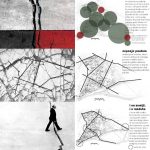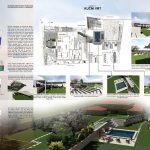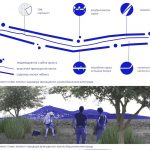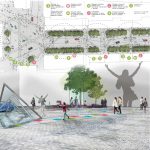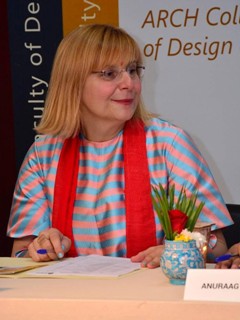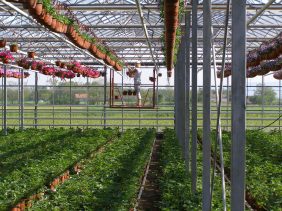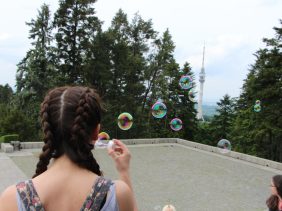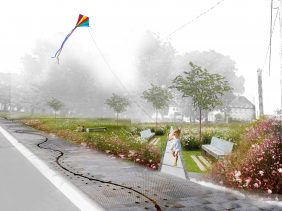Department of Landscape Architecture and Horticulture
The Department of Landscape Architecture and Horticulture of the University of Belgrade Faculty of Forestry has been working since 1960. Since then, it has continuously developed and improved the oldest school of landscape architecture and horticulture in former Yugoslavia.
An insight into landscape architecture
The landscape that surrounds us is dynamic and wonderful. It is a source of life, food, water, but also of beauty, colors, scents … It was created by nature, yet it is arranged by man. It can be created at a micro level by creating a mini landscape – a garden around the house, or a park, a green square or a whole green network created at the city level that mitigates the effects of climate change, relaxes the human psyche, revives a city’s gray appearance … A landscape can also be created at the regional level, by landscaping the peripheral zones of cities or entire tourist areas, taking into account the preservation of harmony between the natural and created (cultural) landscape, i.e. man and nature, thereby improving the quality of life of people.
What deals with the creation of such an environment?
Landscape architecture!
Landscape architecture is based on understanding the way the environment works and what makes each place unique. The essence of this profession is a combination of science, art and culture, vision and thought. It is a creative profession and a skill of planning, designing and managing open spaces. Landscape architects base their work on the knowledge of science, planning policies, design and engineering knowledge. Taking into account the relationship between the natural and the created, they influence the improvement of the quality of human life, protecting, affirming and improving open and close-to-nature spaces (Landscape Institute, 2019).
The fit of man into nature created the beautiful cultural landscapes of Tuscany, but also the magnificent gardens of the Italian Renaissance. Long ago, before that, the mystique of the city inspired people to create some unusual landscapes, such as the famous Stonehenge in England. Chinese culture, which raised nature to the level of a deity, expressed its admiration for it in the Chinese garden, which gained world fame through modified copies embodied in the Japanese garden. On the other side of the world, the French created regular geometric gardens and parks. The English copied the Chinese “style” and created “landscape” parks filled with picturesqueness and romance, and the period of the 20th century created variations of the landscape (English) approach combining greenery and built structures. Today, the modern age creates new approaches and new combinations of built and close-to-nature structures, including the most modern technology in the process.
Meaningful behavior towards the environment and a balanced relationship between man and nature is inevitable. It must be handled with caution, arranging it synthetically while getting acquainted with everything that makes it so complex. This is exactly the basic task of landscape architecture, a profession aware that mistakes made return to humanity like a boomerang. Therefore, today the focus of activity in the field of landscape architecture is directed towards the protection and improvement of the character of urban and rural areas with the aim of adapting to changes caused by social and economic processes, as well as environmental processes (climate change).
What are the effects of landscape architecture ?
Landscape architecture influences space at different spatial levels, from extensive landscaping and regional planning, through designing open spaces of the city, to designing gardens and balconies.
On a regional spatial scale, landscape architecture deals with landscape planning and arrangement. This area focuses on the protection and improvement of the character of landscapes in spatial development planning on various scales (national, regional and local). An area of activity which is of particular current concern is the development of spatial plans of special purpose areas for nature protection facilities, the development of green infrastructure plans for urban areas as well as the development of visual environmental impact assessments.
Another area of landscape architecture – landscape architectural design is present at a more detailed level. This area deals with the detailed creation of different types of spaces: parks, picnic areas, memorial spaces, open spaces of apartment blocks and institutions, squares, private gardens, green roofs …
When creating spatial forms, it is often necessary to communicate an appropriately hidden message, idea, metaphor or symbolism. Therefore, landscape architectural design strives to create a composition in space that has structure, function, shape and meaning. This composition consists of various elements of natural structures – relief, water, and in the first place plants, as well as created components – small buildings, covering, street furniture, sculptures, but also architectural objects with which it is necessary to establish a harmonious relationship.
One of the areas of landscape architecture is landscape engineering, which should implement (build) the imagined in space, as well as take care of maintaining and nurturing the landscape used by man. The created landscape should live its life and gain importance over time, especially because of the plants that are becoming ever more important with their growth.
Knowledge of plant material as an essential element of the landscape, its role in successful design or proper function in space, requires knowledge of bioecological properties of plants and processes in them, which allows landscape architecture to work with healthy building elements.
Of all the applied arts and areas of spatial arrangement, dynamics and multidimensionality are the most pronounced in landscape architecture. The temporal dimension of the landscape is pronounced, especially when the structure of the space consists of water and plants. Variability is seen on a daily basis, through the play of light and shadow, through changes in meteorological conditions, while the dynamics of seasonal changes is also expressed. A special dimension of landscape architecture is the activation of the sense of smell, as well as the sense of hearing through the dynamics of sound (the murmur of water, the chirping of birds …). Simply put – the spaces of landscape architecture are alive. This is the basic specificity and difference of landscape architecture compared to the architecture of buildings and other applied arts.
Find out more about the study program HERE.



